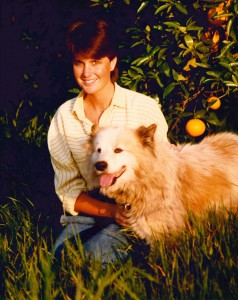Kelly Larson, our 8th grade teacher, has been at City of Lakes Waldorf School for ten years and spent the previous 13 years teaching middle school in public and alternative ed programs.
She grew up in California, received her liberal arts degree in English and Psychology and came to Minnesota with her then boyfriend. Kelly began working in a shelter for 2-7 year old children at St. Joseph’s and discovered a knack for helping the child that nobody wanted. “Those kids taught me a lot about patience and imitative versus purposeful behavior,” remembers Kelly. She was inspired to see what more she could do to help under-served children and got her Bachelors degree in education from the University of Minnesota. After getting her teaching license, Kelly returned to California where she taught middle school for four years.
Then it was back to Minnesota, where Kelly taught in North Minneapolis and Columbia Heights. She worked in alternative schools where her students had been expelled from various other schools for drugs, guns or violence.
“My kids weren’t identified as Special Ed, but they were failing everything,” says Kelly. She threw herself into the work doing curriculum and program development, taking on union responsibilities and also getting involved in administration. It was disheartening to watch the way teachers’ opinions were so often the least important, even though they were the ones working most closely with the students.
When she was offered a job directing a charter school in Hawaii, she jumped at the chance to take a break and check it out. Just before she left, Rosie Cole called. They knew each other from working at the Renaissance Festival. “She’d been trying to get me into this Waldorf’ school. The chalkboard drawings were intimidating and curriculum seemed too prescribed,” says Kelly. Rosie mentioned there was a 7th grade position available, and thought Kelly would be a great candidate.
Kelly flew to Hawaii and toured the charter school, carefully weighing her options. It turned out that Kelly’s interviewer had been a Waldorf teacher in Alaska for 12 years. She describe Waldorf education to Kelly from a teacher’s perspective. “We talked for several hours and I flew home, and called to ask if I could still apply at City of Lakes,” says Kelly.
After she got the job, the parents asked if they could meet her. Kelly was taken aback. Her student’s parents had never wanted to meet her before. “They had a parent gathering at Martha Meyer’s,” recalls Kelly, “and when I walked in they handed me a glass of wine and I knew I was in another world, because in public schools you don’t have a community in that way.”
Kelly had already earned her Masters degree at St. Mary’s, where she facilitated learning committees that allowed teachers to conduct and compare classroom research. They began by asking ‘What is your perfect classroom?’ “I had this ideal of a classroom and a school based on the latest brain research about how children learn best. The use of color, the use of water, the use of plants- all of this stuff,” says Kelly. “When I walked into Waldorf, they were doing what every master teacher said the ideal would be.”
She took that class through eighth grade, and proudly mentions that her first Waldorf students are graduating from college this year. She was amazed at how deeply she bonded with them in just two years. She’s also developed close knit relationships with other faculty members. The difference in the mood at staff meetings compared to what she’s known at public schools was remarkable.
“Everyone was sitting in a circle, with a candle in the center, the shells, the silks,” says Kelly. The attention to beauty and connecting with each other made a huge difference in how the school was run, but the biggest difference was the way teachers opinions were respected. “People looked at each other, and talked to each other. The idea that the teachers actually run the school, that what they say carries weight, it was a different world.”
Her 2nd class is now about to graduate, and Kelly has been with these students since first grade. “I knew what I wanted 8th graders to look like, and act like, so to start with a first grader was a chance to put my money where my mouth was.” She had to soften her persona to teach first grade- trading her favorite blue jeans and motorcycle jacket for long, flowing skirts. She loved singing with her class and discovering each of her students anew each day.
Now, as she finds herself at the end of her eight year journey with these students, she finds parting bittersweet.
“As the year comes to a close, I think, did I give them everything they needed? Did I give them everything I possibly could to be successful? In the last 42 days, what can I still give them that they need or want? Did I overcome my mistakes? Did I apologize when I needed to? Did I fix what I could?”
Parents of teenagers understand what Kelly is wrestling with. It’s hard to let go, but that’s what needs to be done- on both sides. “Everyone grieves differently, but you can’t cling,” says Kelly. “You want them to want to leave, but it’s painful. They have to break away, and they are separating from everything familiar.”
“The eighth grade year asks a lot of a teacher. There is the final play, the 8th grade projects, the year-end trip, and all of the fundraising. But somewhere in the grieving process it changes, and it’s about 20 really awesome kids. I’m looking forward to seeing what they will do with their lives.”


